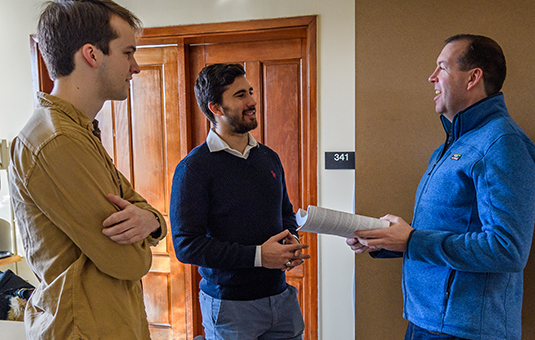Computer Science
Investigating paradigms of group territory in multiple display environments
Document Type
Article
Abstract
Multiple-display environments (MDEs) have promise in helping co-located sensemaking tasks by supporting searching, organizing, and discussion tasks. Co-located sensemaking occurs when two or more sensemakers forage for useful information within a dataset, creating and leveraging knowledge structures individually and together. Group territories in MDEs support communicating and assembling findings, but questions remain regarding how to best represent individual sensemaking efforts in the group territory to support the sensemaking collaboration. This paper empirically examines exploration of a large Twitter dataset using three group territory paradigms: parallel, connected, and merged. Results reveal that merging group work increases task complexity while separating individuals' sections in the group territory supports monitoring, and more interactions are performed when individual work is not connected in the group territory.
Publication Title
Proceedings of the ACM on Human-Computer Interaction
Publication Date
2020
Volume
4
Issue
GROUP
DOI
10.1145/3375193
Keywords
awareness, co-located collaboration, communication, control, group territory, multi-display environment, sensemaking, tabletop
Repository Citation
Niu, Shuo; Scott McCrickard, D.; Nguyen, Julia; Haqq, Derek; Kotut, Lindah; Stelter, Timothy L.; and Fox, Edward A., "Investigating paradigms of group territory in multiple display environments" (2020). Computer Science. 165.
https://commons.clarku.edu/faculty_computer_sciences/165
APA Citation
Niu, S., McCrickard, D. S., Nguyen, J., Haqq, D., Kotut, L., Stelter, T. L., & Fox, E. A. (2020). Investigating paradigms of group territory in multiple display environments. Proceedings of the ACM on Human-Computer Interaction, 4(GROUP), 1-28.



